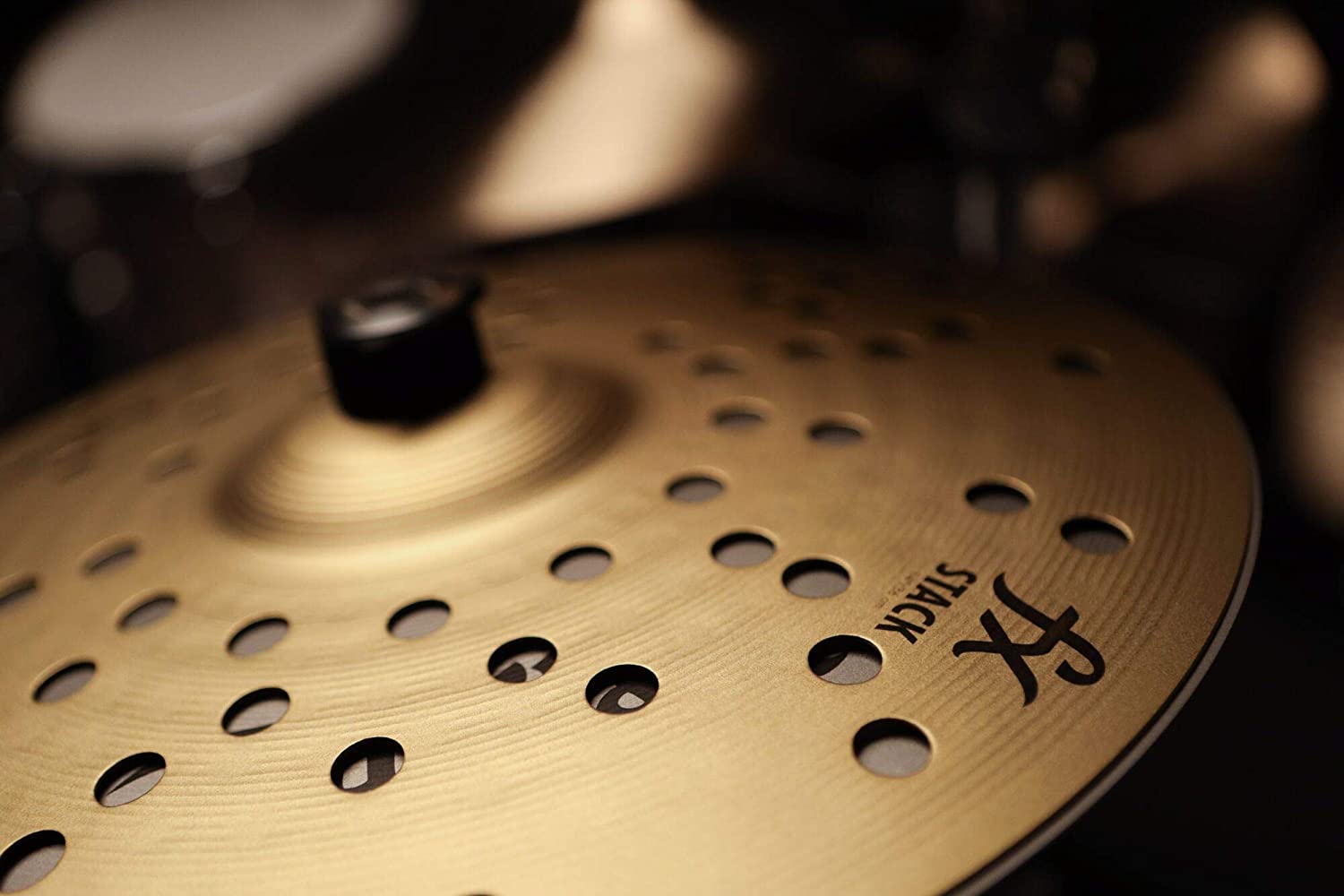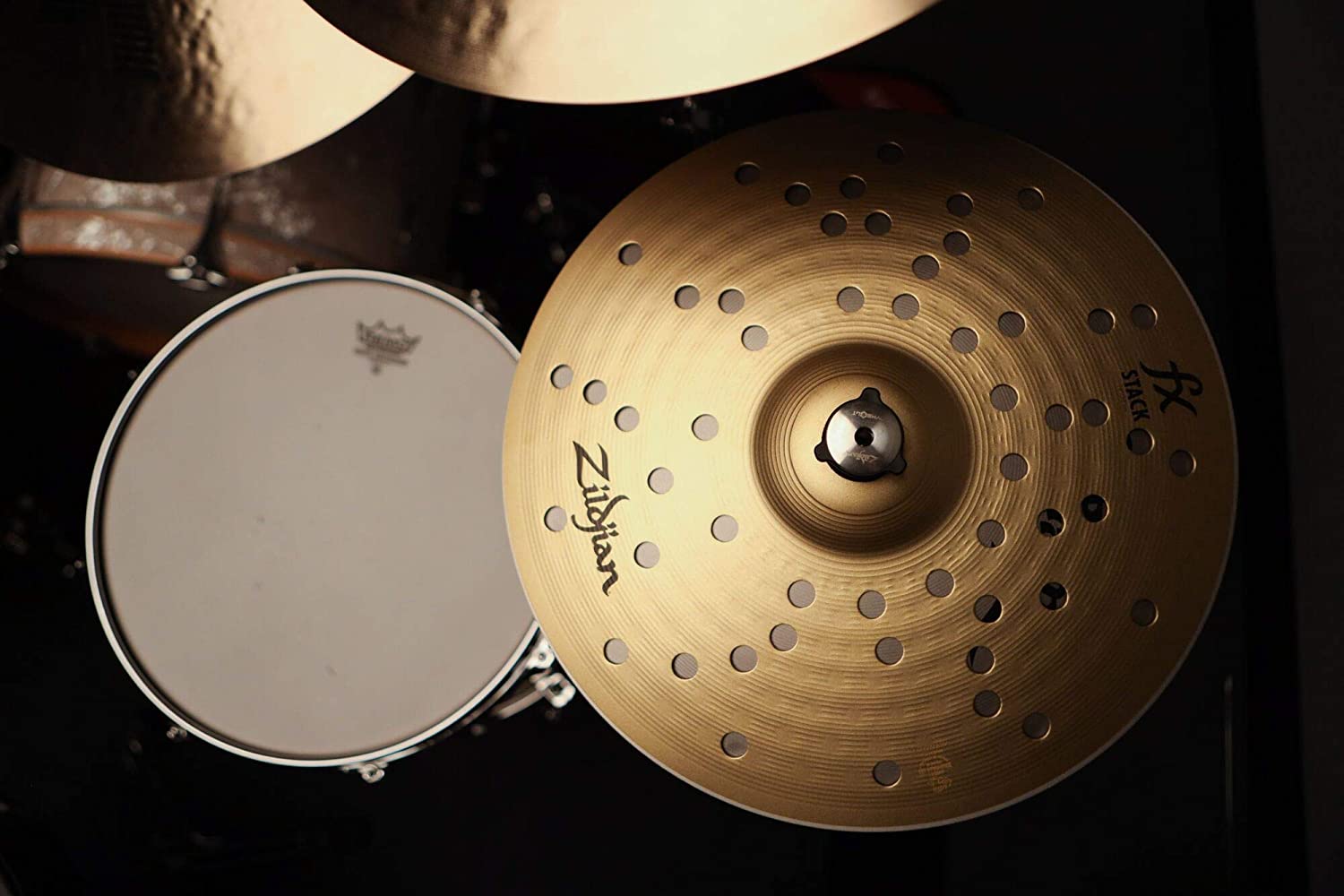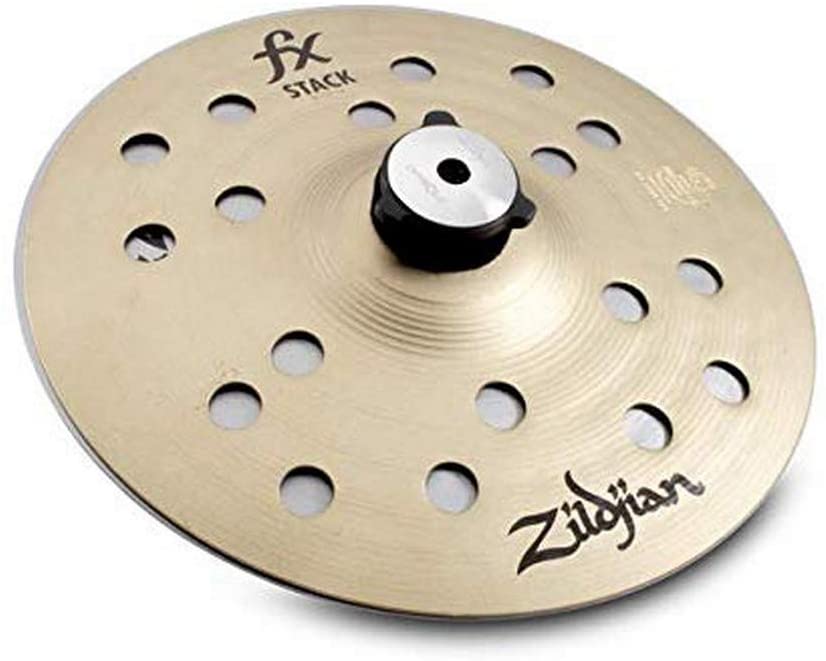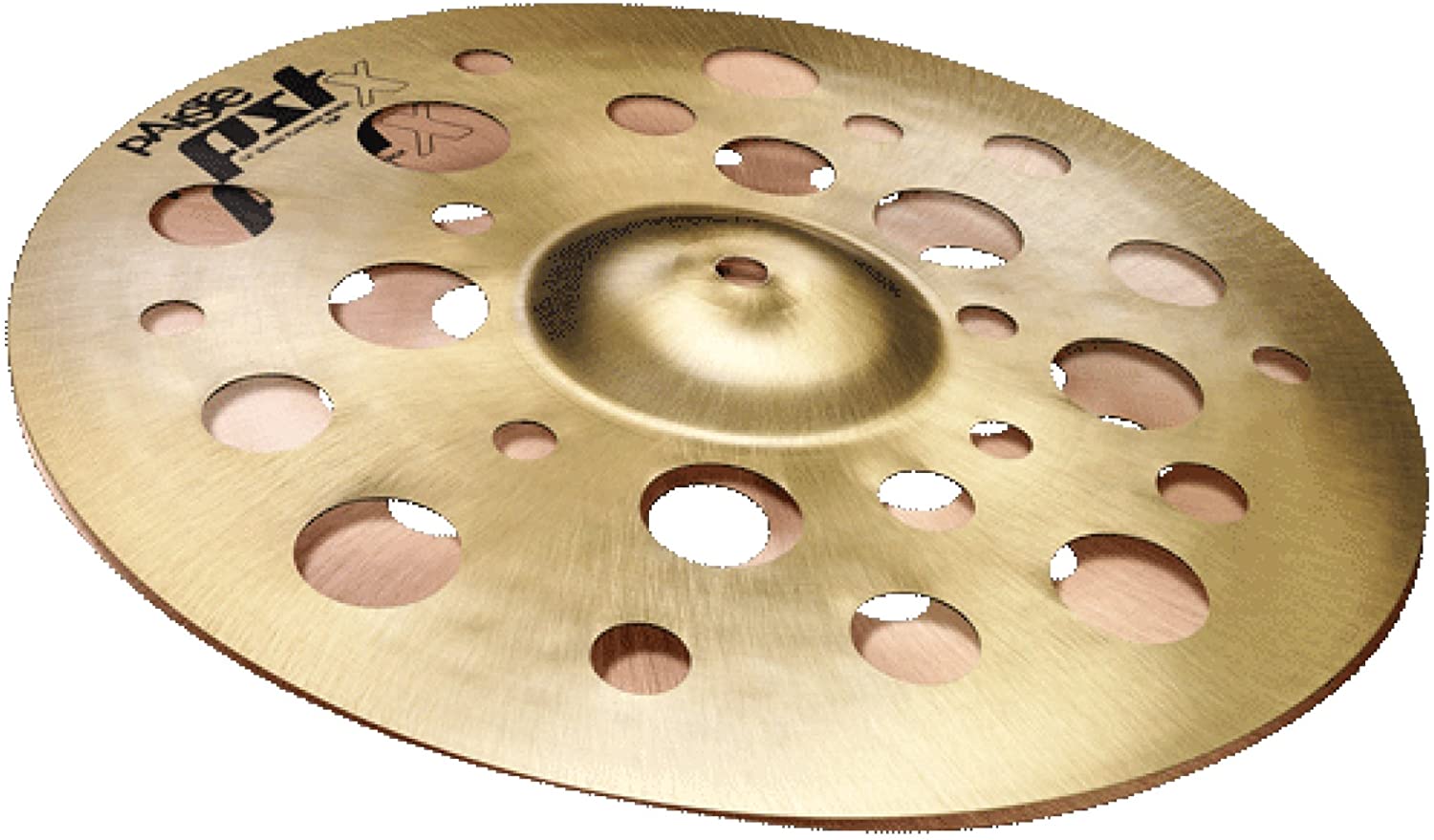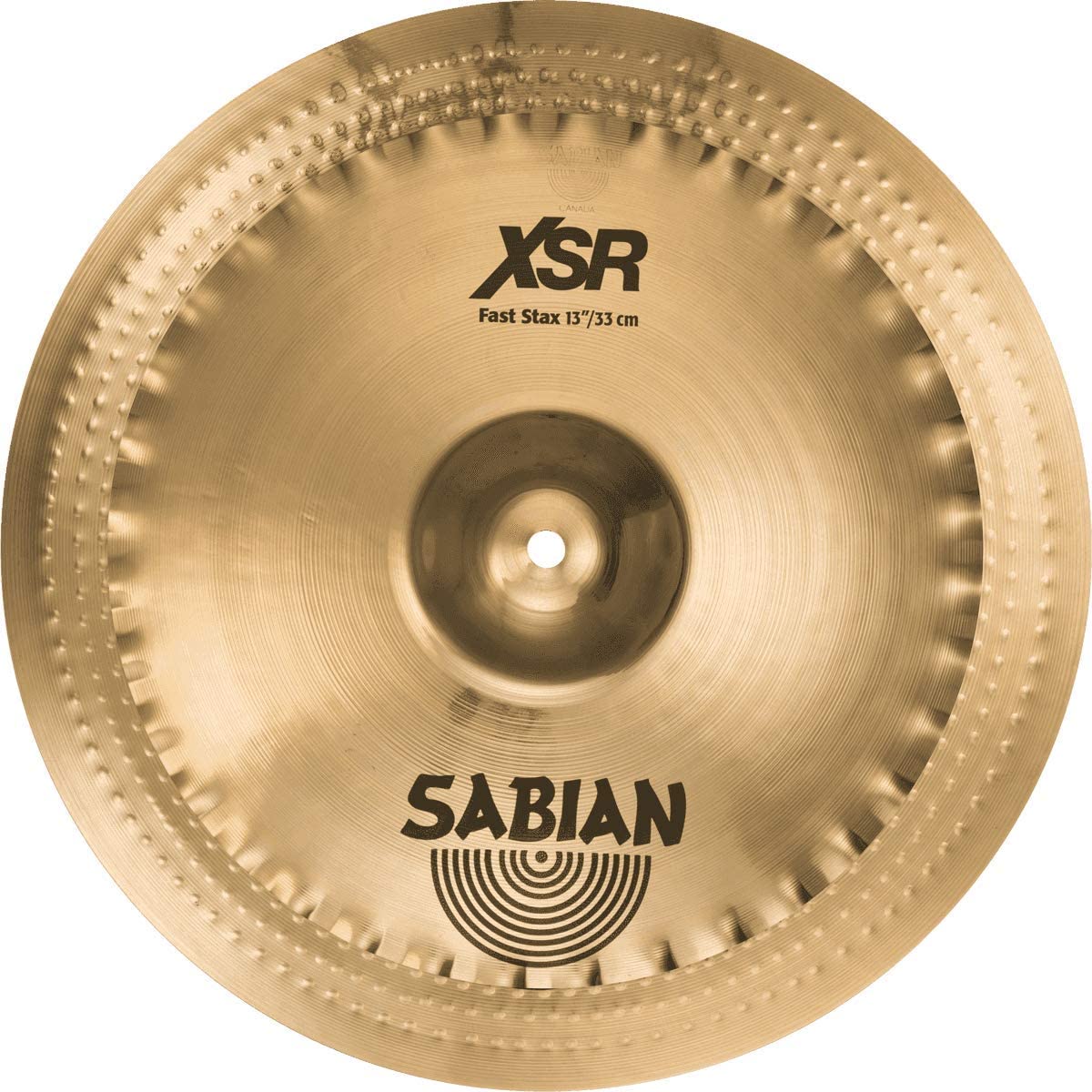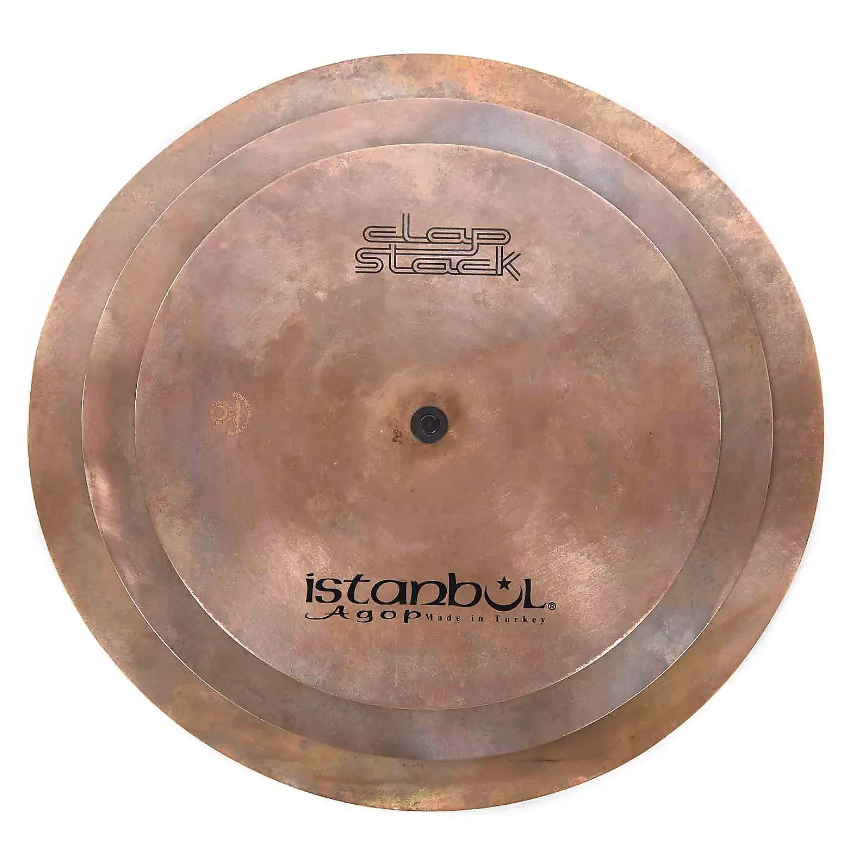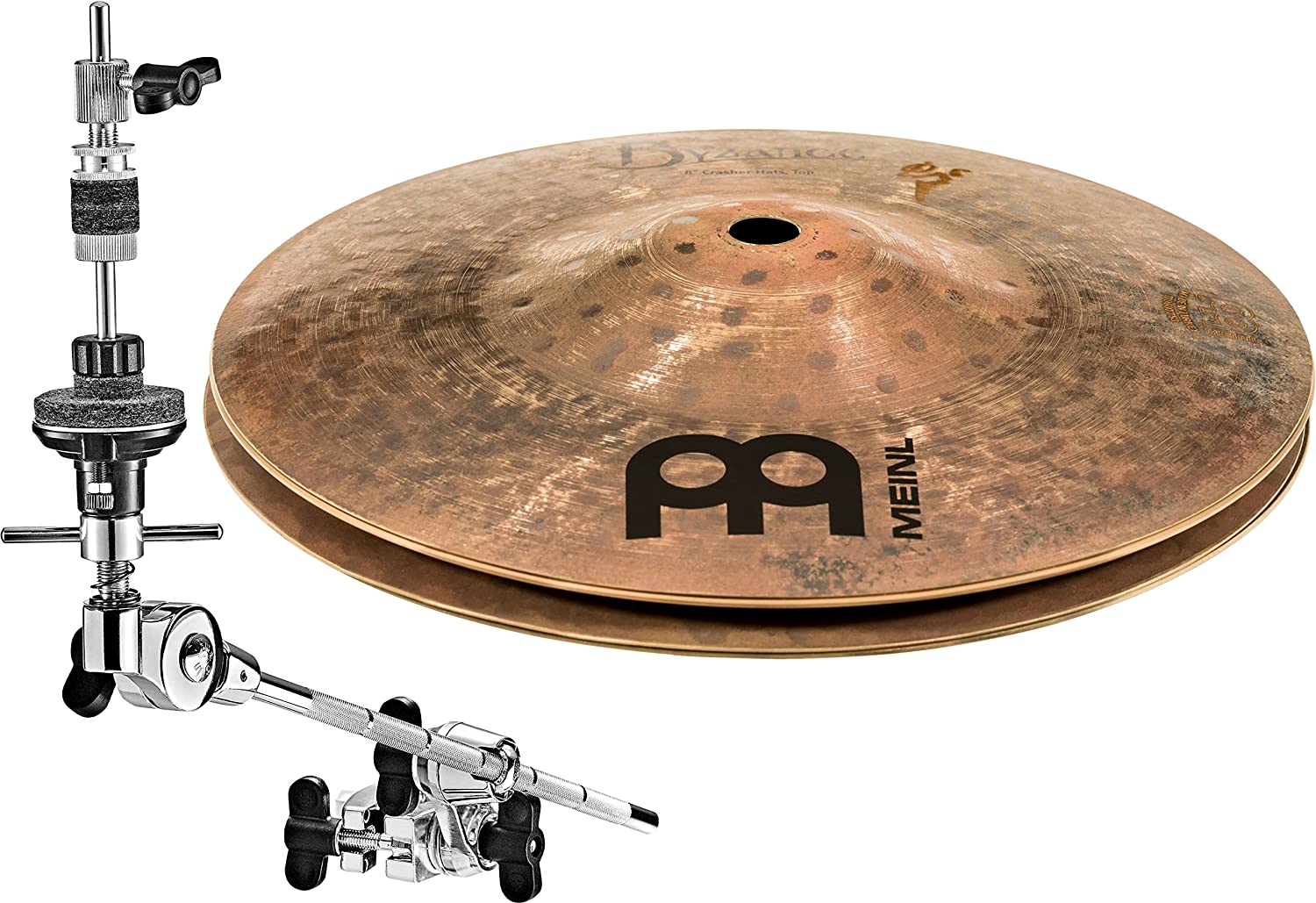Cymbal stacks have become all the rage in recent years. While drummers such as Mike Portnoy and Terry Bozzio used to use them decades ago, only recently have most famous drummers started using them full-time in their setups.
They make a sound that modern music often calls for, especially in styles like hip-hop, trap, and R&B. We’re going to look at different cymbal stacks in this guide. I’ll explain a few varying ways of stacking them as well as entertain the debate on whether buying stacks is worth it over simply making your own.
Bottom Line Upfront: A cymbal stack is when one or more cymbals are placed on top of each other. Placing cymbals like this leads to unique sounds that are trashy. The number of cymbals you have stacked and how tightly you’ve stacked them will affect how much resonance the stack has. Making cymbal stacks is a great way of repurposing old cymbals that have cracked. You can also buy premade stacks from certain cymbal brands.
Cymbals Stacks in Modern Drumming
When I was a beginner drummer, cymbal stacks weren’t something I knew existed. Around the early 2000s, popular music was made by bands such as Blink 182, Coldplay, Green Day, and Nickelback. The drummers in those bands only used crashes, splashes, rides, hi-hats, and chinas.
Nowadays, it’s incredibly common to see a drummer playing for a popular artist using one or more stacks around their kit. As popular music has evolved, so has the standard drum kit setup, and stacks have become a large part of that.
I’d argue that the main reason that stacked cymbals have become so popular is the integration of electronics into most music. Stacks resemble electronic drum sounds more so than standard cymbals do.
Stacks allow you to play things such as handclaps, a sound that resonant cymbals can’t make on their own.
So, if you want to be a modern drummer prepared to play any gig, it will benefit you greatly to have a stack in your setup. Thankfully, stacks are quite easy to make. It’s all trial and error until you find something that sounds good to your ears.
Since I’ve had a few cymbal stacks, I’ve managed to use them in varying gigs. They have a place in most styles of music, even the ones that used to rely on heavy resonating sounds.
Ways of Stacking Cymbals
Part of the appeal of cymbal stacks is the fun you have when trying to make a good one. You may find that stacking your cymbal on top of another gives the worst sound on planet earth. If that’s the case, you’d need to try different cymbals.
After doing that for a while, you’ll end up finding the holy grail, a combination of cymbals that soothes your ears every time you whack them.
There are several ways of stacking cymbals. Each way leads to different results, so I suggest that you try them all. You’ll find yourself having a few favorites.
Here are the varying stacking methods with different ways of approaching them:
Auxiliary Hi-Hats
Hi-hats are arguably the most used parts of a drum kit. So, why not have more than one pair to play with? My ideal idea of a stack is one that I can use to play patterns that I would typically play on the hi-hat.
Having a stack as an auxiliary hi-hat gives you a sound source that still has a staccato sound, yet it resonates a bit more with a trashy undertone.
To make an auxiliary hi-hat stack, all you need to do is stack cymbals on each other and tighten them as much as possible. This will allow you to play the stack on the surface to get a tight sound. You could also play it on the edge to get a stronger sound.
Another way to achieve this is to get a cymbal mount that has a rod. You can place the stacked cymbals with a hi-hat clutch the same way you would on a standard hi-hat. You just won’t be able to open and close them here as you have no dedicated hi-hat stand.
I’ve found that his method works a lot better with smaller cymbals. Larger cymbals will have too much sustain and they won’t feel tight on the surface. That will make playing hi-hat patterns more difficult.
Adding a Third Cymbal Between Hi-Hats
When I first started experimenting with cymbal stacks, I realized that the sound would often be muted too much to sound musical. If I just had two cymbals stacked together, it would sound like I was hitting a trash can lid.
A possible solution to achieve a better sound from a stack is to add in a third cymbal. A great way of getting a juicy hi-hat stack is to sandwich a unique cymbal in between two of the same splash cymbals.
Having that third cymbal in the middle will add a bit of resonance to the stack, boosting its tonal character tremendously.
One of the best cymbals to use in between a stack like this is the Zildjian Spiral Stacker. It’s one of the most unique cymbals in that it doesn’t actually work the same way as a regular cymbal. It’s a piece of metal that spirals. When you place it in between two splash cymbals, you get a bit of movement in the middle of the stack every time you hit it.
Placing Cymbals on Chinas
If you want to use larger cymbals as a stack, a great way to do this is utilizing china cymbals. Since china cymbals have an inverted structure, smaller cymbals tend to fit quite nicely on top of them. It won’t work for all chinas, so you’ll have to find a cymbal that fits.
I love doing this as most china cymbals are a bit harsh for my tastes. Adding a cymbal on top will cut back on the resonance a bit while adding extra depth to the cymbal.
Even though you’ll see this being done with larger chinas mostly, the same method will work with smaller ones as well. If you have a 10-inch china cymbal, you could stack an 8-inch splash on top of it. Just remember not to stack a cymbal that is bigger than the china. If you do that, you’ll be hitting the edge of the cymbal and that will cause it to crack.
Placing Splashes Under Crash Cymbals
I never knew this was a thing until I saw Robert ‘Sput’ Searight doing it when he played with Snarky Puppy. If you place a splash cymbal underneath a crash cymbal, it causes the crash to have a dry tone with a shorter sustain.
It’s one of the most subtle stacking methods, but it can completely change the sound of your crash cymbal. Instead of having a standard cymbal stack to use as an extra cymbal, you’re stacking cymbals with the goal of altering the sound of your crash.
The method works with ride cymbals as well. However, I found that it only works well with ride cymbals that are quite thin. Thicker rides tend to sound mostly the same as before.
The great thing about this is that the quality of the splash cymbal underneath doesn’t matter much. It’s more the structure of it that is affecting the sound.
Placing Cymbals Under Hi-Hats
You can do the same thing with hi-hats. I’ve seen Benny Greb doing this quite often. He places a small splash cymbal underneath his bottom hi-hat to get a stronger ‘chick’ sound. Depending on what kind of cymbal you place there, the sound will become louder or more aggressive.
You could also stack a smaller cymbal on the top hi-hat to have an extra playing surface that will sound different. I’ve found that this method of stacking is the least popular amongst drummers, but it’s worth trying out. You could come up with some unique sounds!
Using Old Cracked Cymbals
Before I get to the part where I recommend some good cymbal stacks to buy, I want to let you know that using old cymbals often brings about the same result as new cymbals would. Since stacking cymbals together kills most of their tone, you won’t hear a difference between old and new cymbals if they’re of the same make and cymbal line.
This also means that you don’t have to throw away cymbals that have been cracked. The best use for them is to create a cymbal stack. Using old and cracked cymbals for stacks is one of the most common things that drummers do in the modern day.
If you’ve cracked a splash cymbal, you could try the method of putting it underneath a crash cymbal to alter its sound. If you’ve cracked a crash cymbal, you could place it on top of a china to control the aggressive tones. The world is your oyster here and bringing new life out of old cymbals is always a fun thing to do.
I’d suggest trying everything you can with your cracked cymbals before deciding to buy a new cymbal stack. Doing that could potentially save you quite a bit of money.
My Top Cymbal Stack Recommendations
With that being said, there are some excellent premade stacks from different cymbal brands. The benefit of buying one of these is that you know the exact sound you’re getting. You get to skip the trial-and-error stage of working with stacked cymbals.
Some drummers heavily protest buying stacks as you can make your own out of old cymbals. However, there are a few stacks that have iconic sounds, and recreating those yourself is going to be very difficult. So, I think buying a stack is a good move if you have the budget for it.
Here are some of my favorite premade cymbal stacks:
Zildjian FX Stack
The Zildjian FX Stacks were introduced in 2019. Since then, these cymbals have become incredibly popular for drummers who play styles like hip-hop and trap. They have an incredibly short and crisp sound, and they sound as if they feel very hard on the surface. I love that as it easily allows you to play hi-hat patterns on the stack.
When you buy a Zildjian FX Stack, it comes with a small cymbal arm to mount it. This stops you from needing a hi-hat clutch. I also feel as though this mount lets you tighten the cymbals more than a hi-hat clutch would.
You can get the FX Stack in multiple sizes, but the 8-inch version is my favorite.
Pros
- Great for hip-hop and trap
- Comes with a mounting arm
- Works well as an alternative hi-hat
Cons
- None
Meinl HCS Trash Stack
The Meinl HCS Trash Stack is one of the cheaper stacks that you can buy. However, it shares a very similar sound with most stacks out there. It’s trashy, punchy, and makes a fantastic alternative sound to the rest of the cymbals in your setup.
The only downside of this stack is that it’s not as dynamically responsive as some drummers would like. This is due to the Meinl HCS cymbals being made from brass.
The stack is made up of a 12-inch HCS china topped with a 12-inch HCS Trash crash. I’d recommend this to anyone wanting a decent stack for a low price.
Pros
- Very affordable
- Two cymbals can be used separately if needed
Cons
- Not dynamically responsive
Paiste PST X Swiss Flanger Stack
The Paiste PST X Swiss Flanger Stack is one of my larger recommendations. This stack is 14” and it has a lot more sustain than anything else we’ve looked at so far. This is the type of cymbal that I would use as a china alternative. It’s got the trashy sound you need, but it’s nowhere near as aggressive as most china cymbals.
The cymbals are quite light and thin, making them feel a bit looser to play than most stacks. It’s something you need to get used to, but I’ve found that it doesn’t take long to get to a comfortable place.
Pros
- Affordable
- Good china alternative
Cons
- Lighter cymbals feel loose to play on when stacked
Meinl Luke Holland Bullet Stack
This stack is called the Bullet Stack because of its incredibly fast decay. Even though the bottom cymbal is 16”, the top cymbal cuts the tone short every time you hit it. I’ve recommended this here as it’s the most ideal replacement for a standard china.
It has the same sound as a china cymbal. However, it doesn’t ring for as long, making it a lot more appealing just like the previous Paiste stack. You can play quick accents on it, or you can keep time with short jabs.
It’s part of Meinl’s Artist Concept Series, and you should know that every cymbal in that line boasts a high price tag. It’s a great cymbal if you can afford it, but many cheaper stacks may suit you just fine.
Pros
- Extremely fast decay
- Good china alternative
Cons
- Very expensive
Sabian XSR Fast Stack
The Sabian XSR Fast Stack has the classic crash cymbal stacked on top of a larger china cymbal. If you want to use this as a china, it will work very well.
However, I’m recommending it because of the 13-inch Fast Stax cymbal that sits on top of the china. This cymbal has perforated edges. Those edges make it an excellent tool to use as a bottom hat in a pair of hi-hats. If you have another 13-inch cymbal lying around, you could have a strong pair of hats with a fairly aggressive tone.
Pros
- Good china alternative
- You can use the 13-inch perforated cymbal as a hi-hat bottom
Cons
- Expensive
Instanbul Agop Clapstack
The Clapstack is one of the most popular stacks that I know of. The reason for this is that it’s the only acoustic set of cymbals that accurately recreates the sound of a hand clap. Most drummers use electronics to achieve the hand clap sound. You don’t need that with this stack.
It’s a set of either three or five cymbals stacked together to achieve this, so it’s quite a process to achieve the sound. Here it is, though, and it’s amazing.
There are a few other companies that make similar products, but the Clapstack is the one that all should be compared with. If you want a hand clap sound in your drum setup, this is what you should get.
Pros
- Makes a realistic hand clap sound
- Stops you from needing to use electronics
Cons
- Cymbals can’t be used separately
Meinl Benny Greb Crasher Hats
My final recommendation is a set of Meinl Benny Greb Crasher Hats. This stack gives you an amazing ‘chick’ sound and it’s ideal to use as an alternative hi-hat. It may not look like much, but it’s four 8-inch cymbals stacked together.
When you buy it, you get a cymbal arm mount that fits the stack perfectly. Since the arm comes with the stack, the overall package is very expensive. In fact, this is the most expensive stack that I’ve listed so far. It’s highly worth it if you’re okay with spending the money, though.
Pros
- Excellent short staccato sound
- Comes with a cymbal stand and clutch to hold the stack together
- Great to use as a second hi-hat
Cons
- Incredibly expensive
FAQs
Answer: If you don’t mind spending a decent chunk of money on a stack, I highly suggest you do it. Buying a premade stack will save you a lot of time as you won’t need to mix and match cymbals until you get a pleasing sound.
You can simply watch a bunch of YouTube videos to find the stack you like the most and then buy it. It will sound the same on your kit as it did on the video, making it highly desirable.
Also, some premade stacks just can’t be replicated. The best example of this is the Istanbul Agop Clapstack. While many drummers have tried, I have seen anything yet that sounds as good.
If you don’t want to spend any money, don’t be discouraged. Broken cymbals make excellent stacks. You’ll just need to fine-tune them in a stacked setup until you get the best sound possible.
Answer: Technically, yes. There are no rules when it comes to stacking cymbals. However, it’s going to be a lot more challenging to get a good sound out of a stacked ride cymbal.
Firstly, ride cymbals are big and have deep tones. I’ve found that deeper sounding stacks don’t sound the greatest. A high-pitched stack is generally what we’re all used to in terms of sound.
The bigger problem, though, is finding cymbals that will fit nicely onto a ride cymbal. If you have a 22-inch ride, you’d need to layer a 20” crash to fit onto it. It might work, but I wouldn’t count on it sounding amazing.
The best possible way to make a ride stack work is to attach a cymbal underneath it to increase the amount of dry tone that the ride has.
Answer: All the major cymbal brands make excellent stacked cymbals. You’ll find a great product, no matter which brand you choose. However, I’d say that Meinl has the most impressive number of stacks available.
Their Artist Concept Series has stacked cymbals that have been specially made with the help of a few of the drummers on their artist roster. Whether you’re looking for a small stack with a tight sound or a large stack that will fill a room, you’ll find something in the Artist Concept Series.
All the stacks are guaranteed to sound good as well as Meinl and the artists have combined alloys and models to get the best results possible.
With that being said, I also think the Istanbul Agop Clapstack is one of the best stacks available on the market at the moment. You could recreate the Meinl stacks if you had the individual cymbals. The Clapstack can only be bought how it is, making it a lot more desirable.
Answer: You don’t need to have a cymbal stack in your drum setup. However, having a stack gives you more tonal options when playing. While most cymbals sound quite similar to each other, a tight stack will sound completely different, giving you a lot more to work with when playing.
I’d suggest using a cymbal stack if you play styles like hip-hop, trap, or anything in the electronic world. Those styles tend to need the sounds that stacks make. If you’re a hard rock drummer, you could easily go without using a stack. The stack sound isn’t vital in driving the music forward.
I personally prefer having a stack over a splash cymbal in my drum setup. Whenever I’ve been gifted splash cymbals, I’ve always utilized them for stacks. I much prefer the sound.
Answer: Drilling holes into cymbals alters how they sound. It typically cuts out some of the resonance and gives the cymbals a trashier tone. This is why you’ll often see cymbals with holes in them being called “trash crashes”.
Cymbals with holes in them often make fantastic additions to cymbal stacks. As having a trashy sound is a desirable trait in a stack, the cymbal with holes will be the biggest contributor to achieving that sound.
Conclusion
After reading all of this, you should hopefully understand everything there is to know about stacking cymbals. People and cymbal companies are constantly innovating and coming up with new ideas, so things may change in the near future and there may be more ways of achieving unique sounds.
If you haven’t before, you should try making a cymbal stack. See what you can do with the current cymbals you have. If it works, fantastic! If it doesn’t, you may need to buy a stack. Check out the options I listed above. There is a wide range of stacks there to choose from that fit all budgets.
For more interesting reading on drum gear, check out the following articles:


